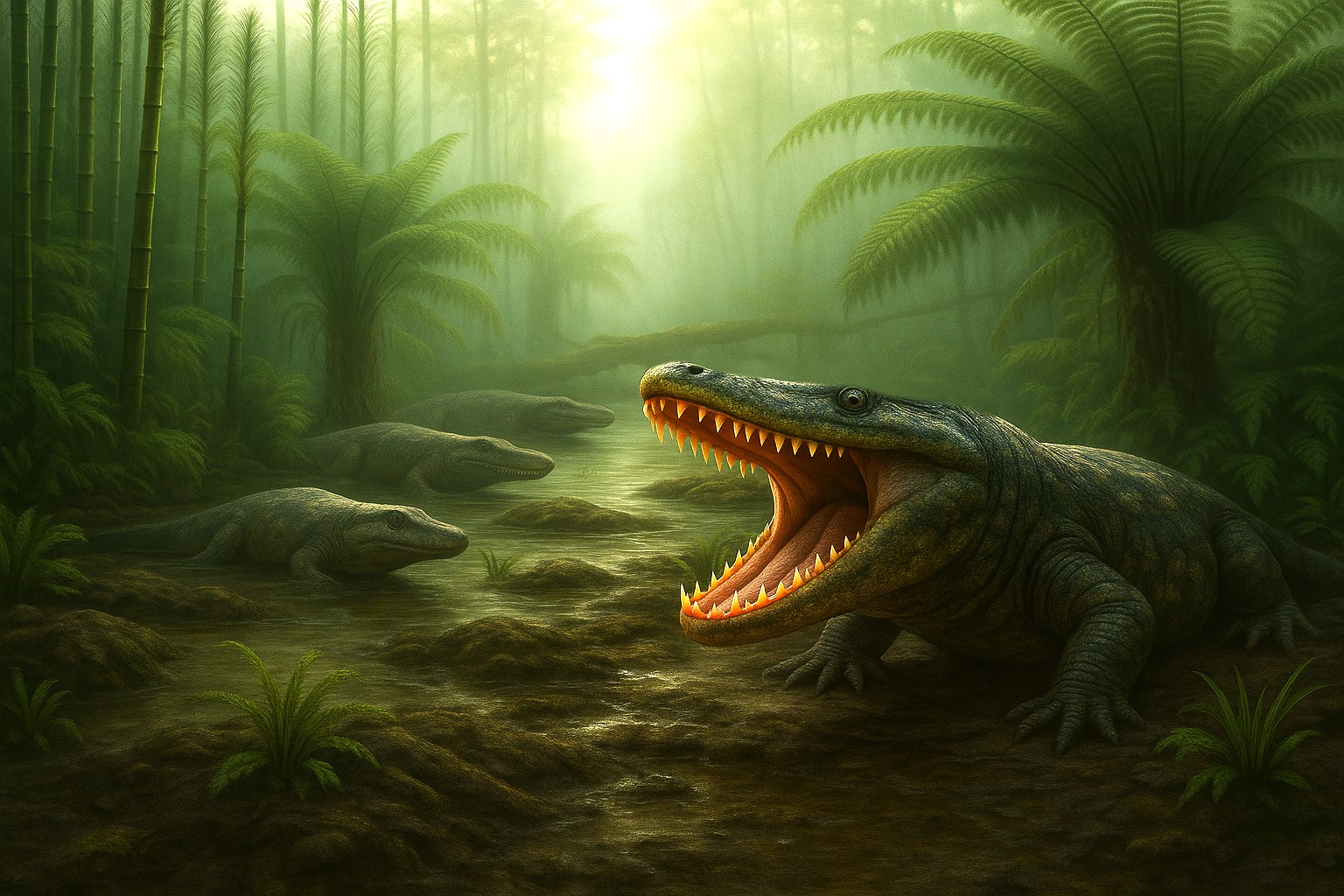
Sensational Discovery from the Triassic Period
April 28, 2025
Sensational discovery from the Triassic period: Bavarian State Office for the Environment presents spectacular fossils at the Munich Show 2025
At this year's Munich Show, the Bavarian State Office for the Environment (LfU) will be presenting a palaeontological sensation: several skulls of a 230-million-year-old amphibian fossil will be presented to the public for the first time. The fossils on display come from at least ten individuals of the species Cyclotosaurus ebrachensis, a prehistoric amphibian that probably lived in swampy waters during the Triassic period.
The discovery dates back to 2021, when new fossil fragments were found in a quarry in Lower Franconia. Attentive quarry workers informed the LfU, whereupon extensive salvage work was initiated. Several large blocks of stone with numerous bone fragments were recovered. In collaboration with Dr. Frederick Spindler and the Bavarian State Collection for Palaeontology and Geology, the fossils were prepared and examined.
A particular highlight of the finds is an impressive 71 cm long lower jaw with preserved teeth and a completely preserved skullcap measuring around 75 cm in length - the specimens are therefore more than twice as large as the original find of a 34 cm long upper skull, which was described by Oskar Kuhn back in 1933. This indicates that the newly discovered individuals of Cyclotosaurus ebrachensis were much larger than previously assumed.
The preparation of the fossils poses a particular challenge due to the small structural differences between the bones and the surrounding sandstone matrix. To facilitate the investigation, modern 3D CT helical scans were carried out at the Fraunhofer Institute in Fürth. Initial tests have produced promising results, and work is currently underway on complete digital reconstructions. This innovative technique enables faster scientific processing and reduces the need for time-consuming mechanical preparation or makes it easier to find bone fragments in large, unwieldy blocks of stone.
The fossils provide valuable insights into the ecology of the Triassic period. In addition to the bones of the cyclotosaurs, microfossils have also been discovered that allow conclusions to be drawn about the living environment at that time. Cyclotosaurus ebrachensis probably lived in freshwater swamps, slow-flowing rivers and ponds. The lifestyle and hunting strategies of Cyclotosaurus ebrachensis are similar to those of modern crocodiles. They were most likely able to hunt smaller dinosaurs and dragged them into a wet grave.
Visitors to the Munich Show 2025 will have the unique opportunity to see these spectacular fossils, as well as impressive 3D reconstructions based on CT scans, up close and learn more about the latest scientific findings.
Press text (German)

